
Manufacturer's Specifications:
Frequency Response: 18 Hz to 21 kHz, ±3 dB
Harmonic Distortion: 0.8%.
Signal/Noise Ratio: 66 dBA with Dolby B NR, 72 dBA with Dolby C NR.
Separation: 37 dB.
Crosstalk: -60 dB.
Erasure: 60 dB at 100 Hz.
Input Sensitivity: 50 mV.
Output Level: Line, 1.0 V; head phone 12 mW into 8 ohms.
Flutter: 0.027% wtd. rms, ± 0.048% wtd. peak.
Fast-Wind Time: 80 S for C-60 cassette.
Dimensions: 17 1/4 in. W x 5 5/16 in. H x 12 in. D (435 mm x 135 mm x 306 mm).
Weight:. 19.8 lbs. (9 kg).
Price: $1.350.
Company Address: 19701 South Vermont Ave., Torrance, Cal. 90502.
The CR-7A cassette deck introduces Nakamichi's latest automatic calibration system and offers other Nakamichi firsts as well. The microprocessor-controlled auto-calibration process includes the expected record-sensitivity and bias adjustments, but adds an important element to achieve superior results: The playback-head azimuth is first automatically aligned to the record head to eliminate misalignment as a source of drooping high-end response. Then, the bias adjustments can correct for true response deviations.
In conjunction with accurate sensitivity adjustments, the best possible Dolby NR tracking is secured.
The azimuth correction is based upon the detected phase (time) difference between the left and right playback channels with a 400-Hz test tone. Time differences between tracks are the same whatever the frequency, and with squaring circuits, the interchannel time error (ICTE) is easily measured. The ICTE is, of course, directly related to the misalignment, and the system's servo drives to reduce the error to zero (in steps of about a minute of arc). I liked the approach and looked forward to seeing how it would fare in the tests. Nakamichi states that their response corrections have a criterion of ± 0.3 dB, and that sounded very good to me, even considering the numerous checks and rechecks of sensitivity and bias during the calibration process. At the conclusion of the procedure, bias and sensitivity data are automatically stored in the CR-7A's memory for that particular tape type, the test oscillator is turned off, user-preferred settings are restored, and the deck rewinds to "0000" and enters record/pause mode, ready to record.
The CR-7A uses Nakamichi's asymmetrical, dual-capstan, diffused-resonance, direct-drive transport for lower audibility of flutter and greater clarity of sound. To gain "smoother tape travel" and "more transparent sound," the capstan drive shafts have a special matte finish and the head assembly includes a pressure-pad lifter. Nakamichi was one of the first manufacturers to use a motor-driven cam to control a number of transport functions, and the three switch cams of the CR-7A inform the microprocessor of system status and tell it how to respond to operator instructions. Automatic slack take-up helps to minimize the chance of damage to tapes.
Quality electronics include direct-coupled recording, line, and headphone amplifiers; a fully discrete playback amplifier with direct coupling from the head; independent power supplies to each circuit, and matched Dolby NR ICs to keep tracking error within ± 0.25 dB.
The CR-7A is the first Nakamichi deck to include a real time counter, which I'm really glad to see-I had almost given up waiting. I think that every deck directed at the serious recordist should include at least one real-time counter mode. The CR-7A offers the desirable nicety of both elapsed- and remaining-time display modes. The counter is not a true clock, because it calculates tape time from tape motion rather than measuring time directly. As a result, however, it has the more important attribute of staying calibrated even during fast winding. Time calibration takes about 8 S, which is quite speedy, and recalibration will take place if needed after a fast wind. Calibration s lost if a cassette is removed, but since recalibration is fast, this is of little import. The remaining-time calibration is purposely set so that it reaches " 00:00" 5 to 30 S before getting to the actual end of the tape. This helps to avoid the very end of the tape, where faint tape wrinkles caused by the hub clamps reduce recording quality. Also, the zero reading is a reference point for "Auto Fade." With this switched on, a recording will be automatically faded out at the tape end (" 00:00") regardless of the actual counter mode. This is a handy feature, especially for those who can't stand the abruptness of a tape run-out.
Control Layout
A look at the front panel reveals other features of interest.
The "Power" button is flush with the panel at the upper left; it would be difficult to turn off inadvertently, and that's good.
The eject button, some distance below, initiates a smooth opening of the cassette-compartment door. The "Timer" ("Play/Off/Rec") slide switch is below the eject button and above the headphone jack. The compartment door is just to the right of these controls. With the door removed access to the head and drive assemblies is excellent. Some cleaning tasks are aided by the fact that the unit can be put in play mode without a tape in place, but caution is needed.
Dominating the top middle and right of the front panel is the multi-function display. At the left is the four-digit, three-mode counter display that indicates tape motion, elapsed time, and remaining time. For automatic time calibration, the correct tape length (C-46, C-60, or C-90) must be selected.
Little "M" and "S" annunciators under the counter's figures remind the user of the minute/second nature of the readout; there are annunciators for tape length as well, showing the choice that has been made.
To the right of the counter are horizontal, two-channel, peak-responding bar-graph meters, each with 24 segments. All of the segments and some of the scale markings are light tan; "0" up to " 10" are red. The large number of segments and the 5-inch length of the bars make for easy interpretation of levels. Below the meter scales is "Auto Calibration," which is always illuminated. When that process takes place, "Azimuth," "Level," "Bias," and "Ready" illuminate in order, just below, showing the status of the calibration procedure. "Ready" stays illuminated at the end of the process, and remains so unless the cassette is ejected or the deck's power is turned off.
Next to these indicators, below the middle part of the meters, is "Tape" with "EX," "SX," or "ZX" illuminated to show the tape type (I, II, or IV) selected manually or in automatic calibration. To the right of these is the EQ read out, indicating 120 or 70 RS. Normally, EQ would be selected automatically along with the tape type, but the CR-7A allows one to switch EQ for particular high-frequency re cording needs: 120 RS for more headroom, 70 RS for lower noise.
The NR system choices are shown with "B" or "C" indicators, as well as "MPX Filter." "Subsonic Filter" lights up to show if that is being used. Further to the right are the "Source" and "Tape" annunciators, turned on in accordance with the monitor choice made.
Below the display panel, at the left, are the "Counter Reset" button (which does not affect time modes), the three-position memory switch ("Memory Stop/Off/Auto Repeat"), and the "Counter Mode" button. "Memory Stop" obtains a stop at "0000" with a fast wind in either direction. (Holding in the wind button will get a wind through zero, a desirable configuration.) "Auto Repeat" will get a repeated playing of the entire side of a tape.
Below are nine angled transport-control buttons, each with its own status light, arrayed in three rows. The top three buttons, from left to right, control rewind, play, and fast forward; all have light-green indicators. The second three control pause, stop, and record. The first two have light-green indicators, and record has a red one. The bottom row consists of "Fader" (with a down-pointing arrow), "Rec Mute," and "Fader" (with an up-pointing arrow). All of these have red indicators.
When the record button is pushed, the deck goes into record/pause mode ("Rec Mute" also lights up), and a push of the play button initiates recording. A push of the down fader reduces the record level to zero, and "Rec Mute" turns on again when this is complete. Pushing the up fader returns the record level to where it was. During fading, the intensities of the two fader indicators show the status of the fading. Holding in a fader button gets a faster fade than a single tap. "Rec Mute" mutes the signal while held in, but it does not get an automatic stop, as is obtained on some decks.
Below the middle and right side of the display are small buttons for selecting "EX(I)," "SX(II)," and "ZX(IV)" tape types, as well as "EQ," "Dolby NR," and "Peak Hold." As mentioned earlier, the tape-type and EQ switches are used only when manual choices are desired. The "Peak Hold" circuit gives a 2-S display of peaks at any signal level even very low levels. This low-level capability is more important than it might seem, for it helps the user to judge all levels similarly. When it is on, "Hold" illuminates just below "Peak" at the left end of the meters.
Below the manual tape switches are the "Tape Length" selector button and the manual "Playback Azimuth" control.
When recording on the CR-7A, auto-calibration would be the normal route, and azimuth calibration would be part of that process. In playing back a tape recorded on another deck or a prerecorded tape, the front-panel azimuth control allows adjusting the playback head's azimuth to match the actual flux on the tape, setting it for maximum high-frequency output. This control is duplicated on the supplied infrared remote control so that the head alignment can be peaked from the listening position. As soon as the control (front-panel or remote) is turned or pushed to get a change, the meter scales blank out and the topmost meter becomes an azimuth-position indicator with a center arrow. Each step made in adjustment is about 2.5 minutes of arc-acceptably accurate in theory and a great convenience in practice.
To the right are the "Auto Calibration" push bar and its "Reset" button, for use in case of error, and the "Monitor" selector bar for source or tape. Along the bottom right of the front panel are four on/off buttons for "Manual Tape/EQ," "Auto Fade," "Subsonic Filter," and "MPX Filter." The "Tape/EQ" switch has an adjacent red indicator; all of the others have annunciators in the display area.
Along the right-hand end of the front panel, from top to bottom, are level-control knobs: "Master," "Left," "Right," and "Output." The "Master" knob is of medium size, and the other three are small. None have knurling, and the friction is slightly too high. The stereo in/out line jacks on the rear panel are gold plated, which is a nice touch. Two "System Remote" jacks--a DIN socket for transport functions and a mini-jack for the azimuth control-can be used to tie this deck into Nakamichi's CA-7 control amplifier.
I removed the top and side cover to examine the internal construction. After some hours of use, the shielded power transformer was noticeably warm to the touch, but still not hot. There are three soldered-in fuses on the power-supply p.c. board, which also contains the bias oscillator. The large logic p.c. board covers almost two-thirds of the chassis area. Below it is a medium-size p.c. board, and at the bottom is another large card which is close to half-chassis size. The soldering is excellent, but there was some flux noted at hand-wired spots. The logic card is well supported, in general, but there was some springiness noted. The overall chassis construction is rugged and very rigid, with large center and side rails from front to back. The transport was quiet in operation, especially in play.
Measurements

Fig. 1--Record/playback responses for "PN/Music" signal, recorded at-20
dB with Dolby C NR, showing overlaid results from 14 Type I tapes (top), 13 Type
II tapes (middle), and 13 Type IV tapes (bottom). See text. (Vertical scale:
5 dB/div.)
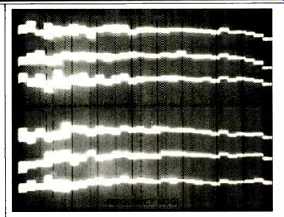
Fig. 2--Record/playback responses to high-level signals with Dolby C NR. Top
three traces show response for wide-band pink-noise test signal at " +10" on
the CR-7A's meter for Nakamichi EXII SX and ZX tapes, respectively. Bottom
three traces are for record/play of "PN/Music" signal at " +8" on
the meter for the same three tapes. See text. (Vertical scale: 5 dB/div.)
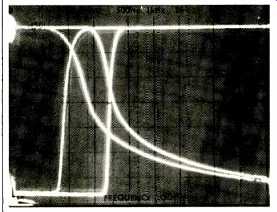
Fig. 3-Action of automatic fader circuits, showing fade-outs (traces descending
from left to right) and fade-ins (traces rising from left to right). Left-hand
trace of each pair shows action in slow mode; fast-mode fades are to the
right. See text. (Scales: Vertical, 10 dB/div.; horizontal, 2 S/div.)
Playback responses with TDK and BASF test tapes were within 1 dB at most points, but there was a greater rise (1.6 to 3.0 dB) at the four highest frequencies of the 70-4 tape.
A number of premium decks have shown a rise in this region, although this deck's rise is about 1 dB greater than most others. This comes from Nakamichi's use of playback heads which correspond more closely to the ideal defined in the IEC Standards than to the IEC calibration heads most tape manufacturers use.
Record/playback responses of the CR-7A were checked using "PN/Music" (pink noise rolled off 6 dB/octave at 2 kHz) and a 1/3-octave RTA. I was struck immediately by the outstanding flatness of the responses, particularly with Dolby C NR. Figure 1 shows the -20 dB responses for Type I, II, and IV tapes (top to bottom). Each trace is actually the stored collection of responses for many tapes having a wide range of performance. The Type I tapes included BASF LH-MI, Denon DX1, Fuji GT-I, Konica GM-I, Magnex Studio 1, Maxell XLI-S, Memorex dB, Nakamichi EXII, PDMagnetics FERRO, Scotch XSI, Sony HF-S, TDK D and AD-X, and Yamaha NR-a total of 14 widely different formulations. The Type II tapes included BASF CR-MII, Denon HD6 and HD8, Loran High Bias, Maxell UDS-II and XLII-S, Memorex CDXII, Nakamichi SX, Realistic Supertape Hi-Bias, Sony UCX, TDK SA and HX-S, and Yamaha CR-X-a total of 13 "noncompatible" tapes. The Type IV tapes were BASF Metal IV, Denon DXM, Fuji FR Metal, JVC ME-P, Konica Metal, Maxell MX, Nakamichi ZX, PDMagnetics 1100 Metal HG, Scotch XSMIV, Sony Metal-ES, TDK MA and MA-R, and Yamaha MR-a total of 13 tapes that are not as similar as some have been led to believe.
I find the results truly marvelous for flatness and consistency, and outstanding for record-sensitivity matching. The vertical spreading of the traces includes statistical effects of the pink noise, any differences in Dolby record-level calibration, any response deviations, and any Dolby C NR mis tracking. All of the 13 to 14 responses for each tape type were completely acceptable, but the Nakamichi tapes sup plied with the CR-7A (EXII, SX, and ZX) were used for the tests that followed.
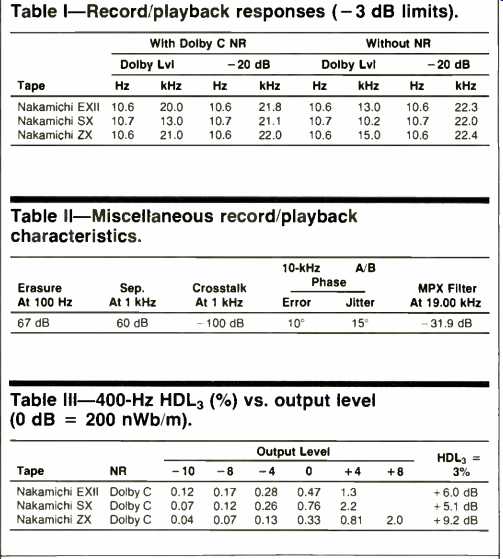
Table I--Record/playback responses (-3 dB limits).
Table II--Miscellaneous record/playback characteristics.
Table III--400-Hz HDL3 (%) vs. output level (0 dB = 200 nWb/m).
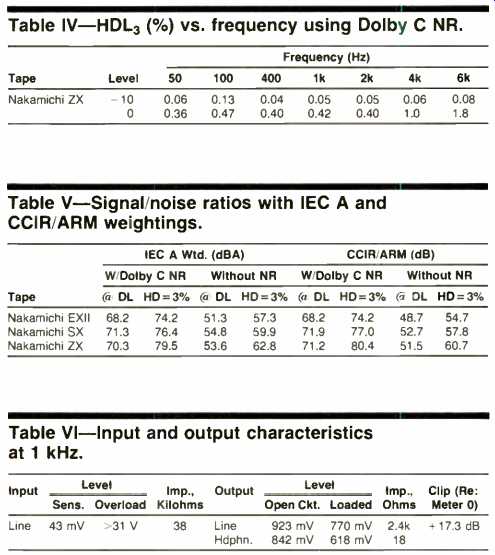
Table IV--HDL3 (%) vs. frequency using Dolby C NR.
Table V--Signal/noise ratios with IEC A and CCIR/ARM weightings.
Table VI--Input and output characteristics at 1 kHz.
I checked the record/playback responses with PN/Music at an rms level equivalent to Dolby level (" + 8" meter). They looked so flat (Fig. 2, bottom three traces) that I next fed in, at maximum meter level (" + 10"), pink noise that was not rolled off. The results, the top three traces of Fig. 2, show how little roll-off there is even at this very high level. This characteristic is reflected in the excellent figures contained in Table I, showing the -3 dB limits with a sine-wave test tone. The low-frequency response is well extended and very consistent, at both levels and for all three tapes.
Dolby play level indication was high, about 1 dB above the meter-zero level. A number of checks were run to see how well auto calibration aligned the playback head to the recorded flux. Using a 10-kHz test tone for the recheck, there was a consistent 10° phase error between tracks with one tape, which translates to a misalignment error of only 0.3 minute of arc. I used the manual control to try to zero the error with the 10-kHz tone and found that the steps were about 50° of phase in this mode. Nonetheless, I got to within 5° of phase, about 0.15 minute of arc-excellent alignment.
The total auto-calibration time was always 15 S or less, with azimuth alignment followed by multiple checking and re checking of 400-Hz level (for Dolby calibration) versus 15-kHz level (for bias and response). The only time I got an error (indicated by a flashing readout) was when I mistakenly tried to calibrate the Type I tape with manual inputs for Type IV and "70 4." The subsonic filter response was 3 dB down at 20 Hz, 20 dB down at 11 Hz, and 30 dB down at 9.8 Hz. The response came back up below this point but was 13 dB down at 7 Hz.
The bias in the output during recording was very low. Table II lists a number of other record/playback characteristics.
Worthy of note are the excellent 67-dB erasure at 100 Hz and the high separation and crosstalk figures--to say nothing of the low phase error and jitter after auto calibration.
The third-harmonic distortion figures were excellent for all three tapes, and, as Table III shows, those for ZX tape were outstanding. The scan with the spectrum analyzer also showed that distortion was primarily HDL3, with little evidence of other harmonics. The low level of the distortion made it difficult to measure HDL3 across the band, and Table IV lists the superior results. Even at Dolby level, distortion was well controlled up to 4 kHz, where tape-saturation effects caused a sharp increase in nonlinearity.
Table V provides evidence of how the high maximum output levels of Table III lead to outstanding signal/noise ratios.
Miscellaneous input/output characteristics are shown in Table VI. The line input impedance given is actually a minimum, obtained with all input pots at maximum rotation.
With the three pots at a more normal setting, the measured impedance was 83 kilohms-good for minimum loading of other equipment. On the other hand, the line output impedance of 2.4 kilohms is on the high side, particularly if the load is 10 kilohms. A 20-kilohm load would not be a problem. The headphone output drove all phones I tried to very high levels; the output attenuator was needed.
The two sections of the master input-level pot tracked each other within a dB for 60 dB of attenuation, which is excellent. The action of the automatic fader was checked with a 1-kHz tone (Fig. 3) for the two fading speeds, for both fade-in and fade-out. The slow fades are to the left in Fig. 3, and the fast fades are to the right. Although a big contrast exists between the speed of the down-fades and of the much taster up-fades, there is some logic to this approach:
The unit fades in fast to be fully up when the music starts, and fades out slowly so the music or applause will trail away to silence. The two sections of the output-level pot tracked within a dB for 40 dB, fairly good. Output polarity was the same as the input in both source and tape modes.
The peak-responding meters met the standards for such meters, with the exception that the 0.7-S decay time was too short. The use of "Peak Hold" appeared essential for good metering. I was not able to verify the accuracy of all the meter-segment thresholds, because they are not tied to specific level figures. Still, the spacing and the results obtained would indicate good dynamic metering. The meter responses were 3 dB down at 10.6 Hz and 20.2 kHz.
There was substantially no measurable change in tape play speed over a range of line power from 110 to 130 V.
Over short periods of time, speed variations were on the order of ± 0.01%. With selected cassettes, I got flutter values of 0.035% wtd. rms and ±0.055% wtd. peak, very close to the specified values. More typically, I got 0.05% wtd. rms and 0.065% wtd. peak. These are good results but not impressive--and they are noticeably higher than specifications. The fast-wind time for a C-60 cassette was 61 S.
There was loose-loop take-up with cassette insertion.
Changes in modes and run-outs to stop were all about 1 S.
Use and Listening Tests
The CR-7A owner's manual is clearly written and has helpful illustrations, but some additional detail would aid many users. (I should note, however, that Nakamichi also sent a lengthy technical memo to members of the press, in the form of a news release.)
All of the controls and switches were completely reliable during testing and listening. As mentioned earlier, the only problem with auto calibration was a mistake on my part. I really appreciated the wide use of annunciators to show switch status; I had been frustrated so many times in the past with Nakamichi's small, black pushbutton switches were they in or were they out? The record, pause, and stop functions all produced light clicks that were down into tape noise with Dolby C NR. I somehow felt personally rewarded with the inclusion of the counter time modes; Nakamichi must have listened to those of us who had pleaded for them. The remote control worked reliably up to at least 20 feet. I put in some prerecorded tapes to try adjusting playback azimuth from my favored listening position, and though about half the tapes were best with the nominal zero setting, others offered a definite opportunity for improvement. Results with the latter demonstrated the value of the Nakamichi approach: There is no other way to match the correction gained by accurate play-head alignment.
I have mulled over the question of whether adjusting the playback head, as is done in the CR-7A, is essential to get proper alignment with the flux recorded on the tape. Any deck's heads are aligned at the factory, of course-the playback head is adjusted to match a good alignment tape, and the record-head adjustment is made with a no-skew blank tape. The ability to re-adjust the playback head, however, ensures the best possible playback of any tape, from any machine, with whatever skew; it must also be recognized that record-head adjustments can do nothing about correct playback of recordings made on decks that suffer from azimuth errors. I conclude that this feature is very worthwhile, one which I would like to see on more decks.
During recording of various sources, I confirmed my earlier conclusion that "Peak Hold" was essential for the best level metering. I made certain that the peak level went no higher than just below the 3% limits measured during the bench tests. Sources included a number of favorite albums, such as Respighi's Feste Romane with Lorin Maazel and the Cleveland Orchestra (Mobile Fidelity MFSL 1-507) and Buddy Spicher and Friends: Yesterday and Today (Direct Disk DD102). I did find that with the CR-7A's excellent low-end response, use of the subsonic filter was required with some of the records.
It took me a very short time to decide that the match between the CR-7A's responses with and without Dolby C NR was definitely the best that I have ever heard; I felt similarly about the source/tape comparisons. The frequency response and level matchings accomplished by the auto-calibration system left me nothing to point to as "too much" or "too little." I was very impressed with the CR-7A's ability to retain all of the low bass contained in some of the source material--even at the highest levels. I had found in tests that the flutter was above the stringent specification, but I did not hear any detrimental effects that I could attribute to this. In comparisons with my reference deck, a Nakamichi 582, I judged the CR-7A's sound to be slightly better and its best level of performance certainly a lot easier to achieve.
Overall, the auto-calibration system worked very well in deed and achieved impressive sonic results. The record/ playback responses were the best I have measured with Dolby C NR, and in/out and source/tape matchings were outstanding. I wish that the deck had punch-in recording and that the output impedance was lower for some uses, but I'm glad that this unit has counter time modes, manual tape selections, subsonic filter, and manual playback-azimuth control. The price is high, but the Nakamichi CR-7A provides a superlative combination of wide, flat response, low noise and distortion, and a superior auto-calibration system.
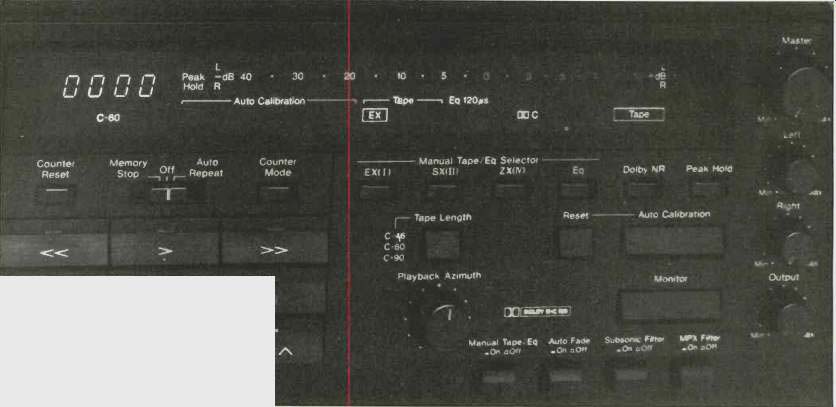
above: To
optimize tape matching and Dolby NR tracking, the CR-7A automatically adjusts
playback-head azimuth during record calibration. The manual azimuth knob is
only used during playback.
-Howard A. Roberson
(Source: Audio magazine, Aug. 1988 )
Nakamichi Dragon Cassette Deck (May 1983)
Nakamichi CR-7A Cassette Deck (Aug. 1986)
Nakamichi cassette decks (Dec. 1982)
Nakamichi Model 600 Stereo Cassette Console (Sept. 1976)
= = = =